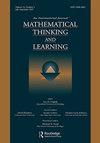The role of instructional materials in the relationship between the official curriculum and the enacted curriculum
IF 1.5
4区 教育学
Q2 EDUCATION & EDUCATIONAL RESEARCH
引用次数: 12
Abstract
ABSTRACT We studied how the distal policy mechanisms of curricular aims and objectives articulated in official curriculum documents influenced classroom instruction, and the factors that were associated with the enactment of those curricular aims and objectives. The study was set in the U.S. context, where there is an ambitious effort to transform curriculum and instruction via the Common Core State Standards for Mathematics (CCSSM). The CCSSM represented the curricular aims and objectives in most of the U.S. at the time of the study. We analyzed enactments of this official curriculum in terms of the rigor of mathematical activity in 47 middle school mathematics lessons from multiple state and curriculum contexts. The enactment of the CCSSM was not uniform across contexts, and the lack of uniformity was associated in part with the type of instructional materials used by teachers. The use of instructional materials classified as delivery mechanism was associated with activity we characterized as routine procedural rigor. In lessons involving instructional materials classified as thinking device, we found greater variation and more occurrences of non-routine forms of rigor. These differences between types of instructional materials occurred despite the finding that teachers across the sample held similar views of the CCSSM. We conclude that the teachers responded more to features in the instructional materials than to the curriculum aims and objectives articulated in the CCSSM while planning and enacting lessons, which has implications for policy makers who aim to influence instruction through national standards and for school districts as they select materials.教材在官方课程与制定课程的关系中所扮演的角色
摘要本文研究了官方课程文件中所阐述的课程目标的远端政策机制如何影响课堂教学,以及与课程目标制定相关的因素。这项研究是在美国背景下进行的,在美国,通过共同核心州数学标准(CCSSM)来改变课程和教学是一项雄心勃勃的努力。在研究期间,CCSSM代表了美国大部分地区的课程目标。我们从多个州和课程背景的47个中学数学课的数学活动严密性方面分析了这一官方课程的制定。在不同的背景下,CCSSM的制定并不统一,而这种不统一部分与教师使用的教学材料的类型有关。将教学材料的使用分类为交付机制,与我们描述为常规程序严谨性的活动相关。在涉及被归类为思维工具的教学材料的课程中,我们发现了更大的变化和更多的非常规形式的严谨性。尽管发现样本中的教师对CCSSM持有相似的观点,但不同类型的教学材料之间仍然存在这些差异。我们得出的结论是,教师在规划和制定课程时更多地响应教学材料中的特征,而不是CCSSM中阐述的课程目标和目标,这对旨在通过国家标准影响教学的政策制定者和学区在选择材料时具有启示意义。
本文章由计算机程序翻译,如有差异,请以英文原文为准。
求助全文
约1分钟内获得全文
求助全文
来源期刊

Mathematical Thinking and Learning
EDUCATION & EDUCATIONAL RESEARCH-
CiteScore
4.40
自引率
6.20%
发文量
18
 求助内容:
求助内容: 应助结果提醒方式:
应助结果提醒方式:


